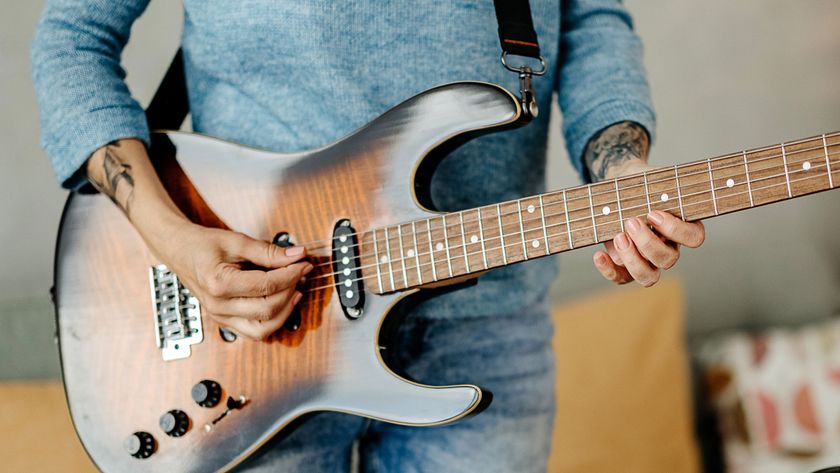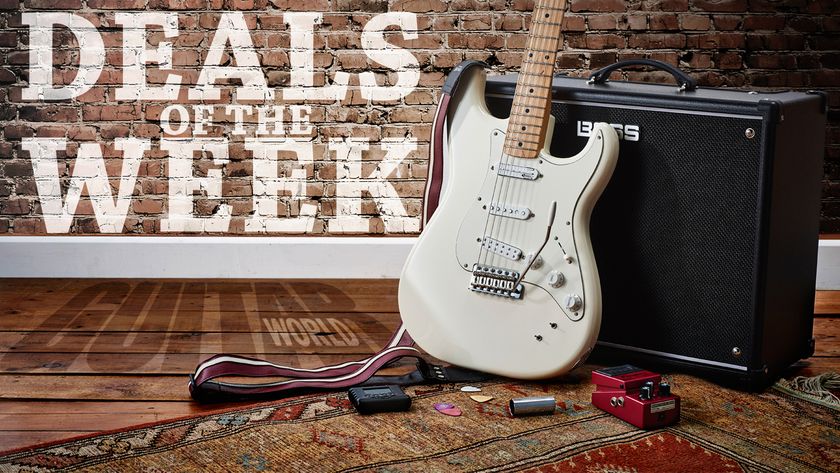Exploring Brad Paisley’s awe-inspiring acoustic country playing
Let's dive headlong into the acoustic style of a Nashville superstar who’s better known for ripping out scary electric licks. Spoilers: he's just as spectacular unplugged

Country superstar Brad Paisley was born on October 28, 1972 in Glen Dale, West Virginia and began learning guitar at the age of eight. His first performances were in the local church and by his early teens he was writing his own music.
Soon, he was performing regularly and opening for major acts like Ricky Skaggs and George Jones. Unlike many musicians, his entrance to the business followed a planned trajectory – he studied music business in college and worked as an intern at Atlantic Records, before signing a publishing contract with EMI just a week after leaving college. His first album, Who Needs Pictures, was released in 1999 and gave him his first number one country single with the beautiful ballad, We Danced.
Paisley’s high-octane electric guitar style has been covered many times, but his skills as an acoustic part-writer and accompanist – which are equal to his electric chops – are often overlooked. His acoustic guitar playing is as versatile as it gets, with his chops ranging from solid strumming accompaniment all the way to ferocious lead work.
For this study, I’ve focused on his colorful approach to playing standard chord progressions, with the following examples examining how he uses chord voicings to create a backdrop to his hit ballads.
You can fingerpick this one or use a guitar pick, though it's worth noting Paisley will often use a plectrum when playing parts like these. The main technique here is ‘chord enrichment’, which means taking standard, ‘obvious’ chords and changing or adding a few notes to them to make more colourful and ‘richer’.
Get the tone
Amp Settings: Gain 3, Bass 7, Middle 6, Treble 7, Reverb 2
Brad Paisley has Martin D-28- and Gibson J-45-style instruments, both popular for this style, but he also plays a signature Santa Cruz dreadnought. Any decent acoustic will of course work for our examples, but new strings and a good set-up always help. I recorded using a Gibson Custom Shop 1934 Jumbo with Royer and DPA mics and API 550A EQs.
Example
[Bars 1-16] A simple device for getting more color from chords is to maintain a ‘pedal note’ against them. In this case the open fourth string is played against both the D chords in the first bar and the A in the second bar.
Depending on what the rest of the band is doing, the open fourth string in the second bar either gives you an A/D chord or a Dmaj9 (no 3rd). On guitar this works especially well with triads on the top three strings like these.
[Bars 17-32] Descending bass lines are a songwriter’s preference that Paisley often employs. Using a bassline to descend from the I chord to the V chord is common and in this example that means moving from D (I) to A (V).
Using chord inversions makes the bassline smooth, so in bar 21 you move from a D chord with the root as the bass note to the A in first inversion with a C# as the bass note, giving an ultra-smooth bass line (known as voice leading).
Get The Pick Newsletter
All the latest guitar news, interviews, lessons, reviews, deals and more, direct to your inbox!
Stuart Ryan is best known for his acoustic guitar playing, from Celtic fingerpicking and traditional folk to modern percussive phrasing and fresh interpretations of popular pieces. He has released several solo albums, written pieces for UK examination boards and created nine tutorial books ranging from acoustic guitar arrangements to Americana styles.

“When we learn to improvise, the first thing we pay attention to is where to put our fingers… rarely do any of us pay attention to the rhythm of a melody or lick”: Can’t figure out why your improvised solos don’t feel right? Here’s how to fix them
![[L-R] A composite image of Ron "Bumblefoot" Thal, Joel Hoekstra, Marty Friedman all taking a solo live: Bumblefoot plays his double-neck. Hoekstra has his white Les Paul Custom. Friedman wears a plaid shirt and plays his PRS signature model.](https://cdn.mos.cms.futurecdn.net/VPKUYFpK9bsjnQdzekheeb-840-80.jpg)
“You should know the music so well that you could still play it perfectly while someone is screaming in your ear”: 15 pro guitarists share their tips for memorizing music
Most Popular









